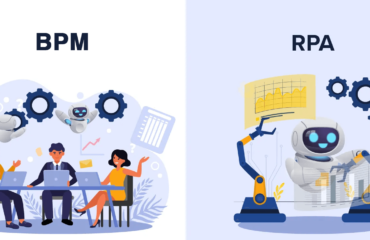
Strategic planning is a systematic and comprehensive process through which an organization defines its long-term goals, formulates strategies to achieve those goals, and allocates resources effectively to implement the strategies. It involves assessing the current state of the organization, envisioning its desired future state, and developing a roadmap to bridge the gap between the two.
The process typically includes the following key steps:
- Mission and Vision: The organization clarifies its purpose and values by defining its mission statement, which outlines its reason for existence. The vision statement describes the desired future state and the organization’s aspirations.
- Environmental Analysis: The organization conducts an analysis of its internal and external environment to identify opportunities and challenges. This includes assessing market trends, competitor analysis, evaluating strengths and weaknesses, and identifying potential threats.
- Goal Setting: Based on the mission and vision, the organization establishes specific, measurable, achievable, relevant, and time-bound (SMART) goals. These goals provide a clear direction and serve as benchmarks for evaluating progress.
- Strategy Formulation: Strategies are developed to achieve the established goals. This involves identifying key initiatives, competitive positioning, target markets, product or service differentiation, and resource allocation. Various strategic tools and frameworks, such as SWOT analysis, Porter’s Five Forces, or PESTEL analysis, may be used to inform the strategy formulation process.
- Implementation Planning: Once the strategies are defined, the organization develops an action plan that outlines the steps, responsibilities, timelines, and resources required for successful execution. It includes setting milestones, establishing performance metrics, and assigning accountability.
- Monitoring and Evaluation: Progress toward the goals and strategies is continuously monitored and evaluated. Key performance indicators (KPIs) are tracked to measure the effectiveness of the strategies and identify areas that require adjustments or improvements.
- Adaptation and Continuous Improvement: Strategic planning is an iterative process that requires adaptation to changing circumstances. Organizations regularly review and update their strategies based on feedback, market dynamics, and new insights. Lessons learned from previous implementations are incorporated to foster continuous improvement.
Strategic planning enables organizations to align their activities, make informed decisions, optimize resource allocation, and increase the likelihood of achieving long-term success. It provides a framework for proactive management and helps organizations navigate through challenges and capitalize on opportunities.
To understand strategic planning and monitoring, it is helpful to familiarize yourself with the following key definitions:
- Strategic Planning: Strategic planning is a systematic process of defining an organization’s direction, setting its goals and objectives, and formulating strategies to achieve them. It involves analyzing the internal and external environment, identifying strengths and weaknesses, assessing opportunities and threats, and developing a roadmap for success.
- Mission Statement: A mission statement is a concise statement that defines the purpose and reason for an organization’s existence. It describes the organization’s core values, primary activities, and the impact it seeks to make in its industry or community. The mission statement provides a guiding principle for strategic planning and decision-making.
- Vision Statement: A vision statement is a future-oriented statement that describes the desired future state or aspirations of an organization. It articulates the long-term goals, aspirations, and direction the organization aims to achieve. The vision statement inspires and guides strategic planning by providing a clear picture of the organization’s desired future.
- Goals and Objectives: Goals and objectives are the specific outcomes an organization seeks to achieve as part of its strategic planning efforts. Goals are broad, overarching statements that define the desired outcome, while objectives are specific, measurable targets that contribute to achieving the goals. Goals and objectives provide a clear focus for strategic planning and monitoring progress.
- Key Performance Indicators (KPIs): KPIs are quantifiable measures that track the performance and progress of an organization towards its goals and objectives. They are specific metrics that indicate the success or effectiveness of strategic initiatives. KPIs help in monitoring and evaluating performance, identifying areas for improvement, and making data-driven decisions.
- Action Plan: An action plan is a detailed document that outlines the specific steps, activities, and timelines required to implement strategic initiatives. It breaks down the broader strategies into smaller, manageable tasks and assigns responsibilities to individuals or teams. An action plan ensures the execution and monitoring of strategic initiatives.
- Performance Monitoring: Performance monitoring involves the systematic tracking and assessment of progress towards strategic goals and objectives. It involves collecting, analyzing, and reporting data related to key performance indicators (KPIs). Performance monitoring helps in identifying areas of success, areas for improvement, and making informed decisions based on performance insights.
- Risk Assessment and Mitigation: Risk assessment is the process of identifying and evaluating potential risks or uncertainties that may impact the achievement of strategic objectives. Risk assessment and mitigation ensure proactive management of risks in strategic planning and monitoring.
These definitions provide a foundation for understanding the key concepts and terminology related to strategic planning and monitoring. Familiarizing yourself with these definitions will help you navigate the strategic planning process and effectively monitor progress towards organizational goals.
Strategic planning and monitoring software refers to a category of software tools designed to assist organizations in the process of developing, implementing, and monitoring their strategic plans. These software solutions are specifically designed to support strategic management activities, ensuring that organizations can effectively set goals, define strategies, allocate resources, and track progress towards their objectives.
Here are some key concepts related to strategic planning and monitoring software:
- Goal Setting: The software enables organizations to define and document their strategic goals and objectives. It provides a platform for articulating specific, measurable, achievable, relevant, and time-bound (SMART) goals.
- Strategy Formulation: Strategic planning software assists in the development of strategies and action plans to achieve the established goals. It may offer features such as SWOT analysis, scenario planning, and strategy mapping to facilitate strategic decision-making.
- Resource Allocation: These tools help organizations allocate resources, such as budget, personnel, and equipment, to various initiatives and projects aligned with their strategic goals. They provide visibility into resource utilization and enable efficient allocation based on priorities.
- Performance Tracking: Strategic planning and monitoring software allows organizations to monitor progress towards their strategic goals. It provides performance metrics and key performance indicators (KPIs) that measure the success and effectiveness of strategic initiatives.
- Collaboration and Communication: These software solutions often include features that facilitate collaboration and communication among team members involved in the strategic planning process. They provide a centralized platform for sharing information, exchanging ideas, and soliciting feedback.
- Reporting and Analysis: Strategic planning software generates reports and analytics to help organizations evaluate the effectiveness of their strategies. It enables data-driven decision-making by providing insights into trends, performance gaps, and potential areas for improvement.
- Alignment and Accountability: The software helps align individual and team goals with the organization’s strategic objectives. It allows managers to assign tasks, track progress, and hold individuals accountable for their contributions towards the strategic plan.
Strategic planning and monitoring software streamlines the strategic management process, enhances communication and collaboration, improves decision-making, and provides the necessary tools for monitoring and adjusting strategies to achieve desired outcomes.
WHEN does my company need strategic planning ?
- New ventures or startups: When starting a new company or launching a new business venture, strategic planning is essential to define the company’s mission, vision, goals, and the roadmap to achieve them. It helps lay the foundation for success and guides decision-making.
- Growth and expansion: Companies often engage in strategic planning when they are looking to expand their operations, enter new markets, or introduce new products or services. Strategic planning helps identify growth opportunities, assess market dynamics, and develop strategies to capitalize on them.
- Changing market conditions: When the market landscape undergoes significant changes, such as shifts in customer preferences, emerging technologies, or regulatory changes, strategic planning becomes crucial. It enables companies to adapt, reposition themselves, and seize new opportunities while mitigating risks.
- Merger or acquisition: Strategic planning plays a vital role in mergers and acquisitions. It helps assess the compatibility of the two companies, identify synergies, plan integration strategies, and align the future direction of the combined entity.
- Financial challenges or downturns: During financial challenges or economic downturns, strategic planning helps companies navigate through difficult times. It involves analyzing cost structures, identifying efficiencies, exploring new revenue streams, and implementing strategies to ensure survival and eventual recovery.
- Long-term sustainability: Strategic planning is essential for long-term sustainability. It allows companies to anticipate and adapt to changes in the competitive landscape, technological advancements, and evolving customer needs. It helps maintain a proactive approach and fosters continuous improvement.
Overall, strategic planning is necessary whenever a company seeks to define its direction, make informed decisions, adapt to change, and ensure its long-term success in a dynamic business environment.




